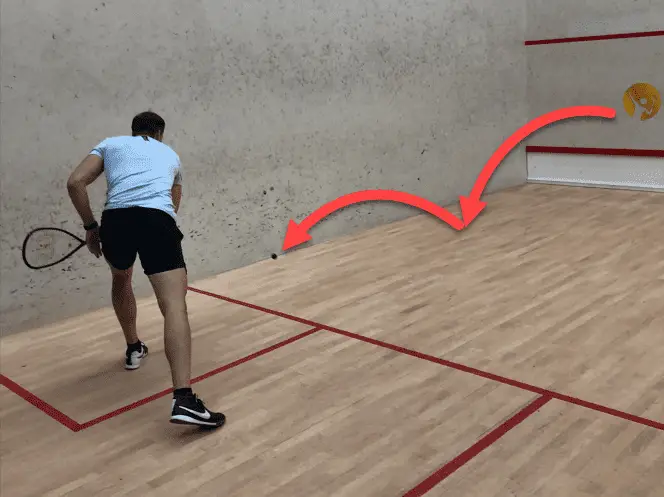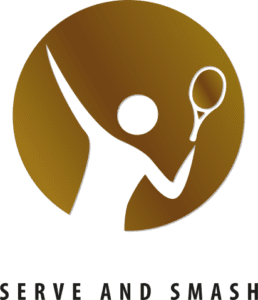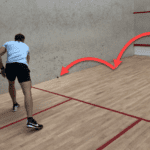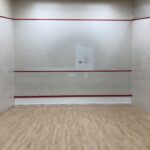This post may contain affiliate links.

Squash balls are hit across the squash court, but how many times can the ball actually hit the floor? I would argue this squash rule is something you actually need to know before stepping on the squash court, so let me make sure that you know!
In squash, the ball is allowed to bounce once (at a maximum) before the player needs to play the return, else the rally is over and the point is awarded to the other player.
Your next question might be, but what if this or that particular scenario occurs, does it then still apply? So let’s start with the basics, but focus on what the regulations say about both this topic and several related scenarios.
WSF rules on the squash return
In another article on carrying the ball in squash, I discussed the same basic principle of an eligible return. The basic guideline for any rally is as follows: as long as the serve and returns are good, the rally continues.
To specify it even further, there are 4 criteria (that all need to be met) to determine whether the return is good:
- The ball is hit before it has bounced on the floor more than once.
- The ball hits the front wall on the playing part without bouncing on the floor and without hitting the opponent (including their racket and clothing)
- The ball returns from the front wall without hitting the tin
- The ball is not considered out
If you are looking for more than just an eligible return, check out this article on how to effectively return a serve.
Let’s dive into the ‘what if’ scenarios I eluded to earlier:
Return without bounce
The squash rules only restrict the maximum number of bounces before hitting the return, but not a minimum. This means that it is allowed to return the ball even before it has hit the floor once. There is added benefit in playing the ball before the bounce since you will force your opponent to react immediately instead of moving to the center of the court. However, in practice, this is harder since the ball is moving around the court so quickly.
The fact that you can let the ball bounce once, means you have more time to properly position yourself and hit the ball where you want it to go. In another article, I stress the importance of coordination and why it is a prerequisite for timing any shot.
Hitting the side wall
According to the squash rules, it is allowed to hit the front wall either directly or via the side or back walls. As long as the ball is not bouncing twice on the floor before the player hits the return it is considered a good return.
Hitting the side wall first, before the ball hits the front wall during the return, is not only allowed, it can even serve as a tactical shot. Every time the ball hits a wall, the opponent needs to anticipate the trajectory of the ball and position himself accordingly. So playing this shot makes it harder for the opponent to return.
Before you try to play every shot like this, hold on! While the shot is harder to predict for the opponent, the ball loses some of its speed every time it hits any of the walls due to the impact.
If you want to get a feeling of how the walls impact the trajectory of the ball, check out this article focussed on the tactics around the return of serve.
Role of the officials
Now that we know that it is not allowed to hit the ball after it bounced multiple times, who is making sure that the rules are actually followed?
It is the task of the marker to decide on certain situations. Note that depending on the tournament there can be one or more officials. In case there is only one referee, the referee is also the marker. When there are two officials, there is one referee and one marker. In the case of three officials leading a match, the marker is the central referee.
The relevant call that the marker needs to make is the ‘not up‘ call. This term is specifically used in our scenario since it is used in any of three scenarios:
- One of the players does not hit the ball correctly
- The ball bounces multiple times before being hit
- The ball touched the player (or their clothes) that made the return
Another remark that I feel is worth mentioning, is the following: If the marker is not sure if the return is good or not, they should not make a call. In that case, it is up to the referee, since it is his task to ultimately make the decision/call.
Appeal by the opponent
Even though we only talked about the officials, the opponent can also make an appeal if he deems the return to be incorrect. Generally, the referee rules on the player’s appeal and results in any of these scenarios:
- The officials (referee or marker) decide whether to award the rally to the opponent (non-hitting player) if they agree with the appeal.
- If the referee is unsure, he or she will award a ‘let’ and the rally is played again while no point is awarded to any of the players.
- The officials can disregard the appeal if they do not agree and grant the rally to the hitting player.



